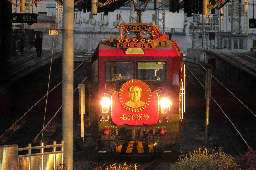The first battery-powered locomotive manufactured by China Railway Rolling Stock Corporation (CRRC) Dalian Co. Ltd was launched in Bangkok on Wednesday to aid Thailand's efforts to improve its railway service while cutting carbon emissions.
Battery electric locomotives are great for shunting local industries and short branch lines. They are not great for mainline service. There's a :wtyp: episode on this too. Put up the damn wires!
China is doing battery trams too and they are also dumb, although not as dumb.
I'm willing to give battery buses a second look because they work well for low-ridership systems, but seriously the Soviets did it right.
China has some hydrogen trains as well. A few questionable projects among a sea of good transit. Maybe they're trying to grift international investors lol.
Doesn't almost every Chinese official have slightly different plans for how to actually create mass transit that works? And due to china's enormous size and population, every single province keeps trying slight variations of the same plans, to see what works best?
The train fan community in China is absolutely huge and absurdly influential, they have a lot of granulated opinions on mass transit. The biggest forum I found for it had like 40 million users
Oh theres no question that China really likes their trains. I'm just commenting on the absurd amount of independence that governors of provinces are allowed by the central government, in particular if said governor can make a good case for why his specific idea should be tested out.
i dont remember the name at all, id have to find an image i was interested in and reverse search it on baidu to find it, but i looked into it like 2 years ago too so no way i find that image
if you wanna search it have fun lmao
Pretty much. The central government usually would have a general idea of what they want to accomplish it. The local level will test and find ways to solve the problem.
If there is a winning formula, the central government would be interested to adopt it on bigger and bigger scale.
There was an article about the credit system and it studies pilot projects from 2 cities and how they wanted to implement in their respective cities (how and what is consider punishable, what are the rewards, etc)
The battery is better served as a backup if the overhead lines fail. Honestly China should focus much more on just the overhead trolleys and trams. They worked well in the USSR and continue to work well today. Also the costs of maintenance and infrastructure is minimal, at most needing the wiring and building tramways into the roads.
An interesting conclusion that I arrived at is that a city bus becomes more fuel-efficient than private automobiles by just carrying 6-8 people, with 10 for an accordion bus.
A significant contributor to the low fuel economy of buses is frequent stop-start. This can be addressed through less frequent stops (on some lines, there are equity issues for people with impaired mobility) and signal prioritization. Top of my dome, city buses get 3-5 MPG on average on city roads but could be cheesed as high as 8 MPG in ideal circumstances!
Given average fuel economy in the US is somewhere between 25-33 MPG, and the average vehicle occupancy is 1.5 MPG, the breakeven point goes down to 4.7-6.2 passengers! This is only based on gallons of fuel consumed though. It does not take into account embedded energy in the vehicle itself, or the fact that most passenger vehicles use gas whereas busses mainly use diesel which has 13% more energy per gallon.
I read up on this particular model of train and it appears to be a gas -> battery conversion of a gas engine.
Is it for situations where most of a given line can be electrified except small parts of it ... ?
its used for providing power to different parts of the country
at least that would be cool tho not really practical






